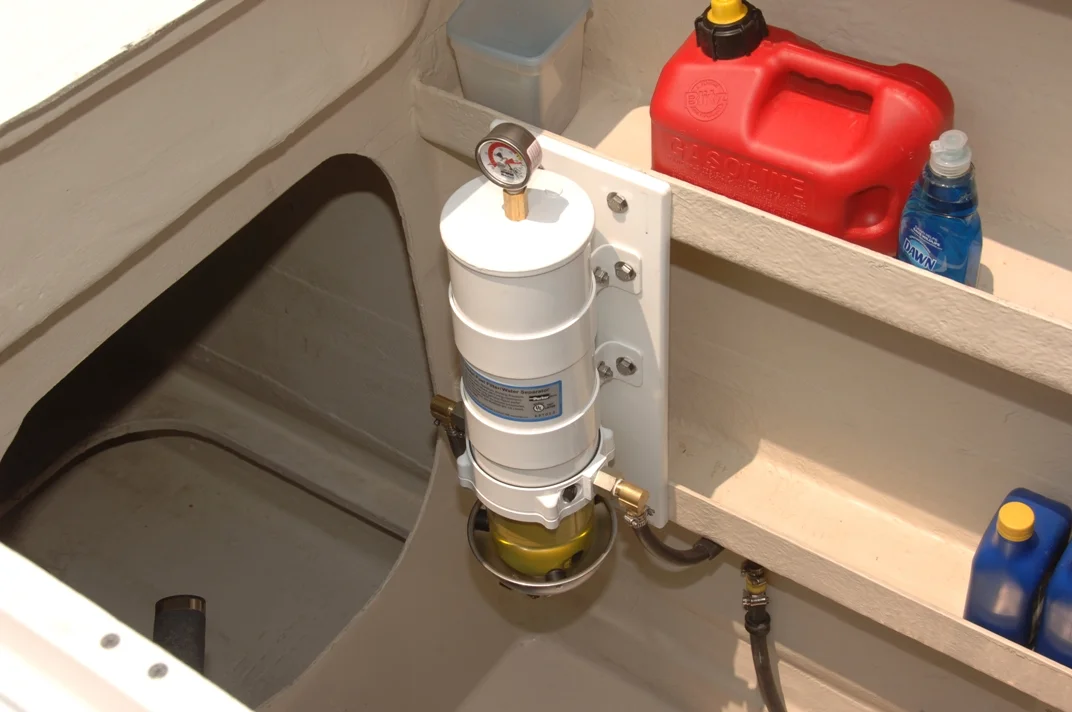I present this directly from a service bulletin from the Racor Division of Parker Hannifin Corporation. I always thought it interesting, and something you ought to know about. It is about how air can separate from diesel fuel...BillP.
The Phenomena of Air Separation in Diesel Fuel
Fact #1: There is AIR entrained in diesel fuel.
Fact #2: A very slight pressure drop can cause air to form visible bubbles.
Fact #3: Air can cause problems.
Fact #4: Air entrained in diesel fuel is not the same as diesel fuel vapor.
Fact #5: Air, once freed from fuel, will not go back into solution. Fuel vapor, however, CAN go back into solution (solid fuel).
The Problem
When fuel is in storage and quiescent, air is not visible. Depending on how much air is present in molecular form, more or less will separate from fuel as it moves through any torturous path, such as a fuel filter, and collects in any high point in its path.
If this collection point is above the outlet of the filter, the air will collect until the bubble is large enough to reach down to the outlet. The air will begin to extend beyond the outlet orifice due to its surface tension until forces are great enough to break part of the air bubble free. It then passes into the outlet line as a significant size bubble.
In the past, the average size engine never noticed air bubbles passing through its injection system because the absence of solid fuel was of such a short duration, the kinetic forces kept the engine running while missing a few power strokes until solid fuel reentered the injection system. In the vocabulary of diesel fuel injection engineering there is a term called IEB (Interrupted Exhaust Beat). One cause of IEB is air bubbles passing into the fuel injection system; other causes are not relevant here.
For small engines, the problem will often result in an engine shutdown, because the amount of fuel for each injection is so small that the air bubble lasts during too many injections and the engine will stall before solid fuel reenters the system.
With the advent of electronic controls, the problem can become even greater. In some of those systems, the air bubble may be sensed as “fuel exhaustion” and the engine goes into shutdown mode.
Many smaller engines, however, use rotary distributor type fuel injection pumps and these, due to their design, can often handle the incoming air bubble. The air escapes into the governor cavity before being metered to the high pressure pumping plungers.
The Solution
The simplest and best solution is to use a filter head that has the outlet line exiting directly from the top, with no place for air bubbles to collect. In this solution, air is not stopped from coming out of fuel, but as each minute bubble forms, or coalesces on the downstream side of the filter media and passes to the top side of the element, it will pass out of the filter as a very tiny bubble. These bubbles seen in clear tubing may appear in a minuscule stream as champagne type gas bubbles.
Have a great week!









